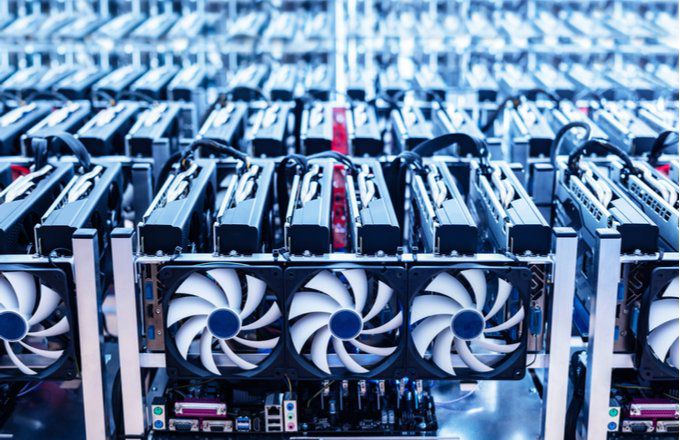What is a Mining Pool?
Mining and mining digital currencies have various stages, from selecting the desired digital currency to buying devices and equipment, equipping them, and finally choosing the mining pool. But the main question is, what is an extraction pool? Why miners are connected to mining pools. We will answer these questions below.
What is an extraction pool?
Mining Pool is a virtual place where a community of miners each integrates the processing power of their devices to increase their chances of profitability in mining. Because of the competition to solve complex mathematical problems in the Bitcoin network, miners focus their processing power on the mining pool.
To better understand the mining pool, it is necessary to explain it a bit. In the mining process, miners place transactions in containers called “blocks.” To connect a block to a blockchain, miners have to assume the numbers and solve the mathematical equations to answer the equation, or hash block. This requires hardware processing power and power consumption. The purpose of mining is to keep the network secure and prevent attacks. Finally, to be motivated to work for mining, each miner who reaches the answer to the equation sooner than the others receives a reward, which is also called the Block Reward. For example, the premium for the current bitcoin block is 12.5 bitcoins, which are generated every ten minutes and given to the miners.
In the early months of the advent of bitcoin, miners were directly affected in mining, and there was no mining pool. But now that mining is a competitive process, and today rich goliaths have entered the field of mining, the globe’s small miners can not compete with tens of thousands of machine farms and directly extract digital currencies.
Suppose you have a device with 50 processes per second of processing power to extract bitcoins. If you are looking for direct extraction, you have to compete with competitors to solve problems with a total processing power of about 120,000,000 per second. That’s why your chances of getting a block reward are almost zero.
Therefore, the most crucial factor in joining a miner in an extraction pool is increasing his profitability chances. Small miners give their processing power to a mining pool, and the mining pool, on behalf of all. Participates in the mining process, receives a mining reward, and distributes it among the miners according to the power of each miner.
After the miner enters a mining pool, it adds its processing power to the processing power of the other members of the pool. And they all form a single miner; In this way, the process of extracting digital currency. It will be faster, easier, and more economical.
Another thing about mining pools is that the miners’ society is in a virtual mining pool. That is, in Iran, you connect to a collection in Russia via the Internet and share your processing power with miners from all over the world.
Types of rewards in extraction pools

The method of paying mining bounties by mining pools can be different. Large mining pools usually use one of the following methods to deliver their users.
- Payment per share
- Relative payment
- Point-based payment
- Pay per N last share
Pay Per Share (PPS)
This method pays the extraction profit in proportion to the amount of processing power you provide to the network. You will be given shares, and the same interest will be paid. Here, which is abbreviated as “Pay Per Share,” nonetheless of the success of the block extraction and regardless of the pooled income, you will acquire a profit.
In payment per share, it is the pool that pays the percentage of individuals extracted from its inventory. The newer version of this payment method is called PPS +. The function of PPS + is the same as PPS, except that the pool also calculates the transaction fee for each block.
Relative payment (Proportional)
Like the previous method, relative payment receives a profit in proportion to the processing power that a miner gives to the pool. The difference is that the reward will be given to you only if it becomes a block mine. In the comparative method, instantly after the extraction of a block. Your bonus in proportion to your share of the total processing power will be credited to your wallet account.
Remember that as the number of miners in the pool increases in relative pay, the reward received decreases. On the other hand, the chances of finding the block and allocating rewards will be higher.
Score-Based Payment
Point-based payment is designed to prevent the pool from constantly changing. In other words, the extraction pool gives you points for your activity, and the more issues you have in the collection, the more rewards you will receive. The bonus will be credited to the miners’ account after a block in the point-based payment method.
Pay for the last N share (Pay Per Last N Share)
In this mining bonus payment method, miners first receive shares calculated within a predetermined framework. Unlike other dividend payment methods, shares outside the bonus range are not awarded in the payment method for the last N shares. N represents the last shares received until the block is resolved.
For example, if we consider N as ten billion shares after creating a block. Only the last ten billion shares that have joined the extraction process will be rewarded. Keep in mind that the N digit is not known, but the method of calculating it has a constant coefficient related to the difficulty of extracting the pool.
This method of payment is also called “pay for luck.” This is because, if implemented correctly, miners will be able to calculate the exact time of joining the pool.
Advantages and disadvantages of joining the pool Extraction

As we explained earlier, joining an extraction pool expands the opportunities of finding the answer to the equations. And thus receiving the extraction reward. When mining bitcoins alone, you have to compete with many mining giants to solve block equations, which drastically decreases your chances of getting rewarded.
Another advantage that joining a mining pool gives you is income resilience. When you mine bitcoin in a mining pool, you are a powerful miner, and you can estimate your profit. As a result, your earnings will be credited to your account at a fixed rate.
Reduce currency extraction costs Digital is another benefit of joining an extraction pool. You will. Connect the blockchain if you want to connect numerous devices individually, directly to the network. And solve its equations, you will incur exorbitant costs Will take.
However, joining a mining pool also has disadvantages, including increased network focus. The more people move towards using mining pools, the greater the focus on the network, in the case of bitcoin. Due to the large size of the mining pools, it is only possible to focus the grid on paper and not worry too much. But in the case of more minor currencies, increasing the penetration of the mining pools would be dangerous.
Transparency of extraction pools There are other disadvantages. The collection will likely show you the wrong figures. Give and abuse your income. In this case, your chance to find this manipulation will be meager. As a result, before joining an extraction pool. The correctness of the process and Make sure it is transparent.
Technical problems of swimming pools are another problem Is what you will get when you join them. If connected to a pool, Your income will also depend on the stability of the pool connections and tools you Will have; In other words, out of reach of the collection due to technical problems. Income You also get confused and have to wait for the pool to fix the problem, and that’s it. The issue can change your profit margin.
Select the extraction pool
To find a suitable extraction pool, you must consider several factors, some of which we will mention below.
Check your infrastructure; Remember that some pools only allow sure miners to connect; So before choosing a collection, make sure that your equipment is consistent with the accepted equipment of the pool. Slushpool, for example, prevents the operation of devices that extract bitcoins using graphics cards (GPUs) or CPUs and can only be connected to ASIC devices. Some other pools do not allow users to connect to any Internet, and the minimum level is set for linking to them.
Know the payment methods of the pools well; Choosing the suitable payment method will have a significant impact on your income. Therefore, before choosing an extraction pool, check the payment method. On the other hand, some pools pay mining bonuses to miners at specific intervals. Some of them have payment restrictions, and some have a minimum level of withdrawal.
Choose a transparent pool; as discussed in the sections above, some mining pools are not very fine. And miners are not aware of the details of the activities in the collection. This causes users not to notice if the statistics are violated or tampered with. And sometimes cause irreparable damage to them.
Consider the fee for each pool; Each pool has a specific rate that it receives from the miners. Be sure to find out this amount before connecting to the collection.
Some pools place restrictions on minors; some collections are private, and not every miner can connect to them. Several pools have also prohibited users from various countries; Therefore, before choosing a pool, make sure that there are no sanctions-related problems. Other restrictions include hash rate restrictions, infrastructure restrictions, and payment restrictions. And payment intervals are some things to keep in mind.











